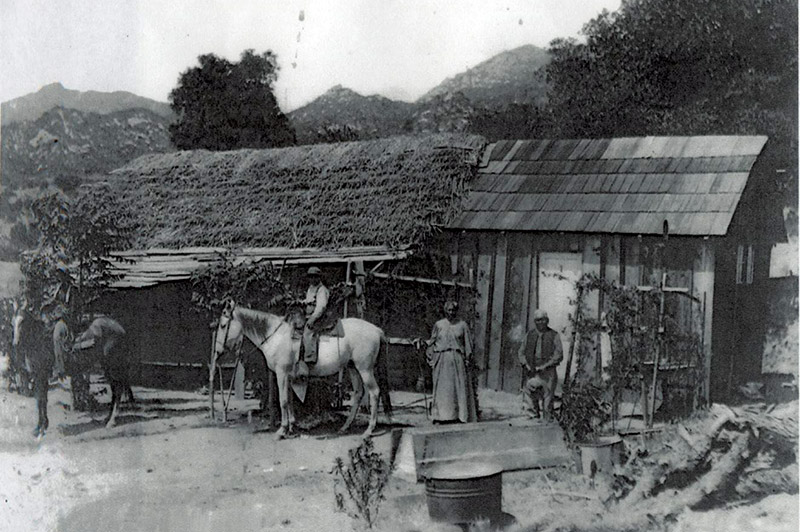By the late 1800’s the hot sulfur springs found on the Cupa territories were becoming very popular and attracting visitors from Los Angeles and San Diego. The popularity of the destination and the growing California population began the events which ultimately led to the expulsion of the Cupans from their homeland.
Four years after California became a state, a land survey commission was formed, and cattleman Juan Jose Warner claimed 47,500 acres of what is now Warner Springs. Warner Springs makes up the majority of the Cupan homeland. The property was later purchased by former California Governor John Downey in 1880. Downey then filed a lawsuit — later pursued by his heirs after his death — claiming title to the land and demanding eviction of the Cupenos from the property. The Cupas argued before the courts that Mexican law, as well as the peace treaty that ended the war between Mexico and the United States, ensured Indian rights and precluded the hostile takeover of their land. They argued to no avail. The California courts agreed with Downey and in 1901 the United States Supreme Court affirmed the judgment ordering removal of the Indians.
President Rutherford Hayes, prompted by the Supreme Court holding, declared the Indians “trespassers” and ordered the tribe relocated to Pala, California, just beyond the Palomar Mountains where a 10,000-acre reservation had been established. Pala was a Luiseno reservation then, not Cupa. This act marked the first time in U.S. history that two distinct Indian tribes were herded together in one reservation. This was a blemish upon a nation that prided itself on leading the world into the 20th Century and the cultural and political renaissance that accompanied such a transition.
On the morning of May 12, 1903, Indian Bureau agent James Jenkins arrived with 44 armed teamsters to carry out the eviction. Rosinda Nolasquez — the last survivor of the expulsion — later testified that “Many carts stood there by the doors. People came from La Mesa, from Santa Ysabel, fromWilakal, from San Ignacio to see their relatives. They cried a lot. And they just threw our belongings, our clothes, into carts.”
The 40-mile journey from Cupa to Pala took three days. The Cupeños call it their “Trail of Tears.”

